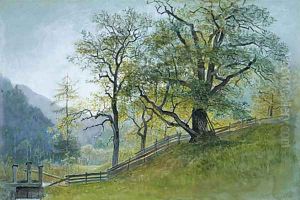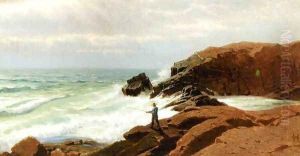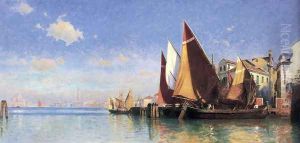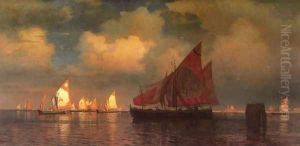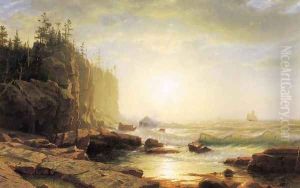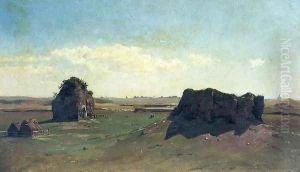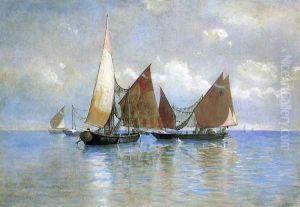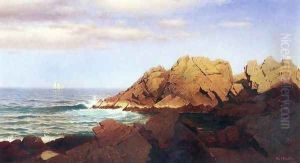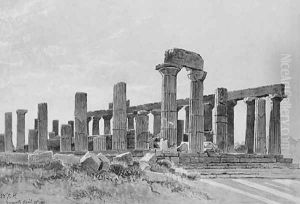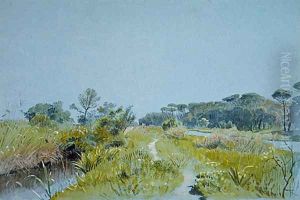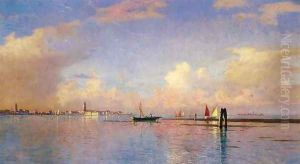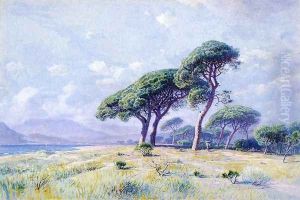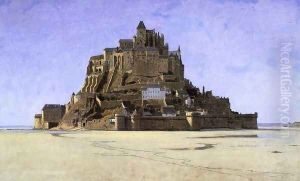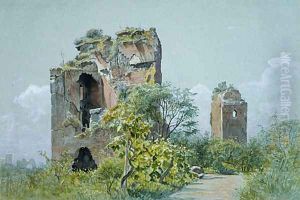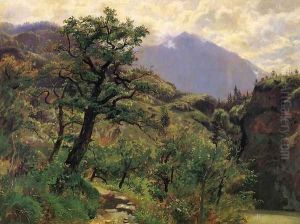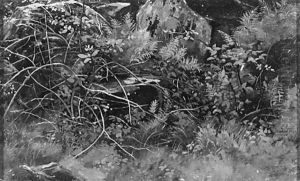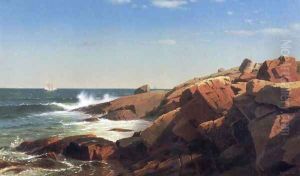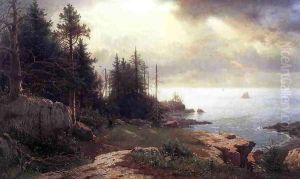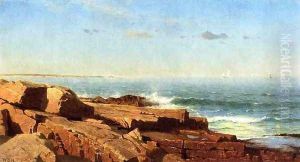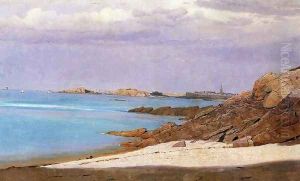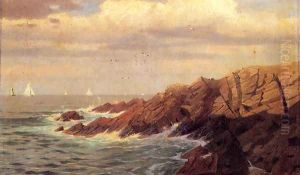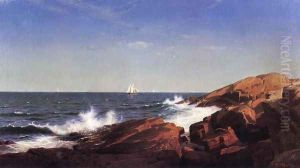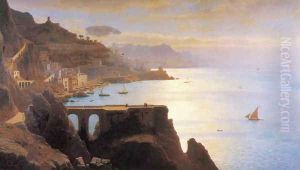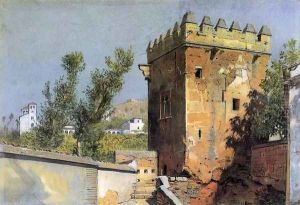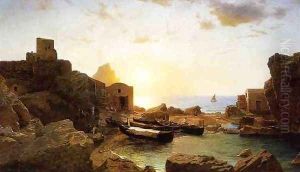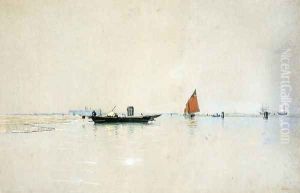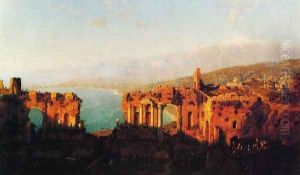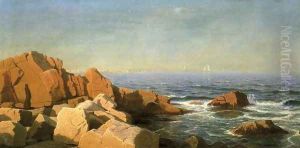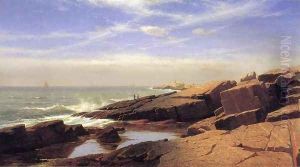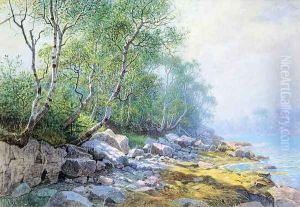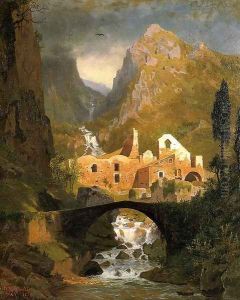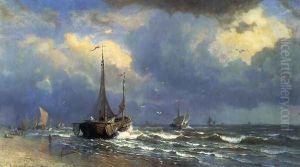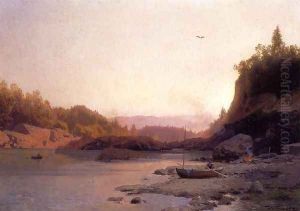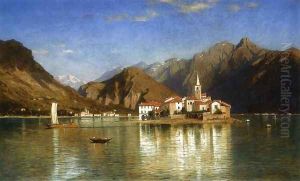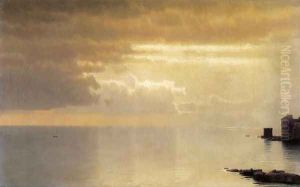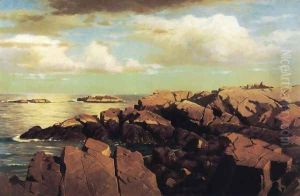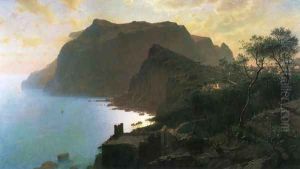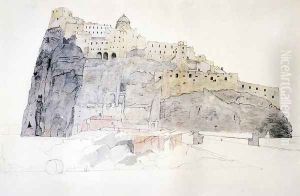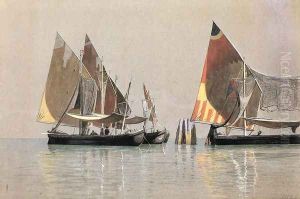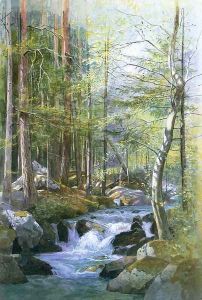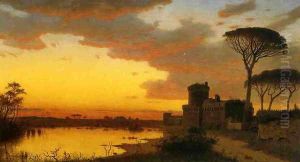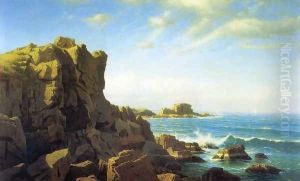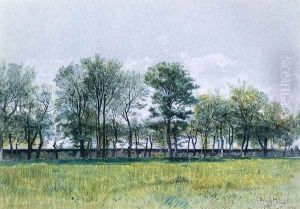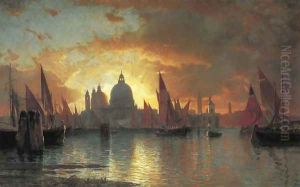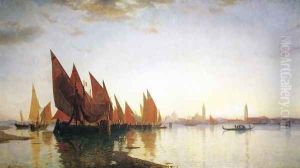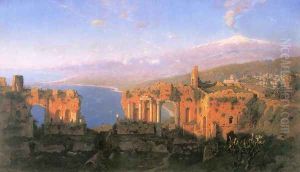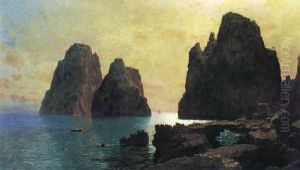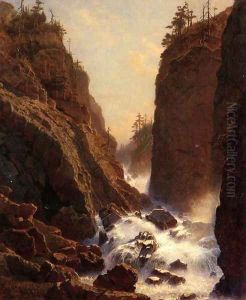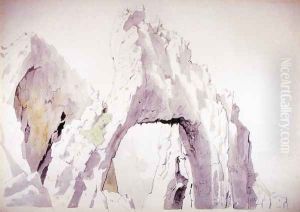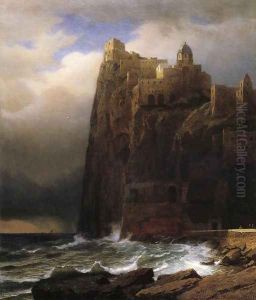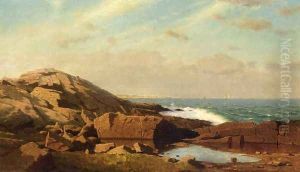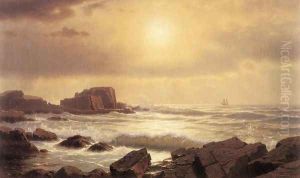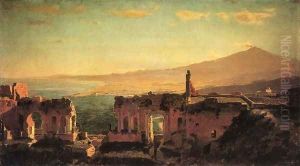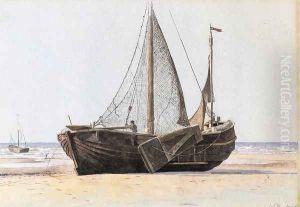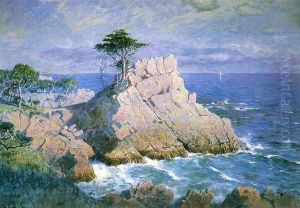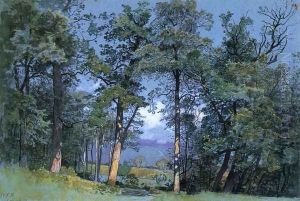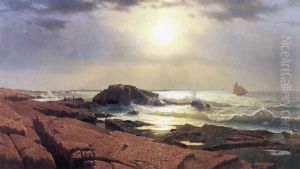William Stanley Haseltine Paintings
William Stanley Haseltine was an American painter and draftsman best known for his landscape and marine paintings. Born on June 11, 1835, in Philadelphia, Pennsylvania, Haseltine emerged from a cultured family that encouraged his artistic pursuits. He studied at the University of Pennsylvania and later at Harvard University, though his focus remained on art. After graduating from Harvard, he traveled to Düsseldorf, Germany, where he honed his skills at the Düsseldorf Academy, a major art school of the period, under the tutelage of prominent instructors.
In Europe, Haseltine was exposed to the works of the Old Masters, and he became part of the Düsseldorf school of painting, which emphasized detailed landscapes. His early works reflected the meticulous approach of this school. He traveled extensively throughout Europe, capturing the varied landscapes of Italy, Germany, and Switzerland, among others. His paintings from this period often depicted the grandeur of nature with a high degree of realism and attention to detail.
Haseltine became associated with the Hudson River School, a group of American landscape painters who were influenced by romanticism. His work began to evolve, incorporating the luminist approach, which is characterized by attention to the effects of light and atmosphere in landscapes. He became well-known for his striking depiction of light, particularly in his seascapes and coastal scenes.
In 1866, Haseltine settled in Rome, where he became a central figure among the expatriate artist community. His studio became a hub for both American and European artists. During his years in Italy, Haseltine's style continued to develop, with an increasing focus on the play of light on water and the textures of the earth.
Haseltine's work gained considerable acclaim during his lifetime. He exhibited widely and received numerous awards. His paintings are characterized by their vibrant light and meticulous detail, and they continue to be appreciated for their artistic merit and historical significance.
William Stanley Haseltine passed away on February 3, 1900, in Rome. His legacy is preserved in the collections of major museums across the United States, including the Metropolitan Museum of Art in New York, the Museum of Fine Arts in Boston, and the Smithsonian American Art Museum in Washington, D.C.
